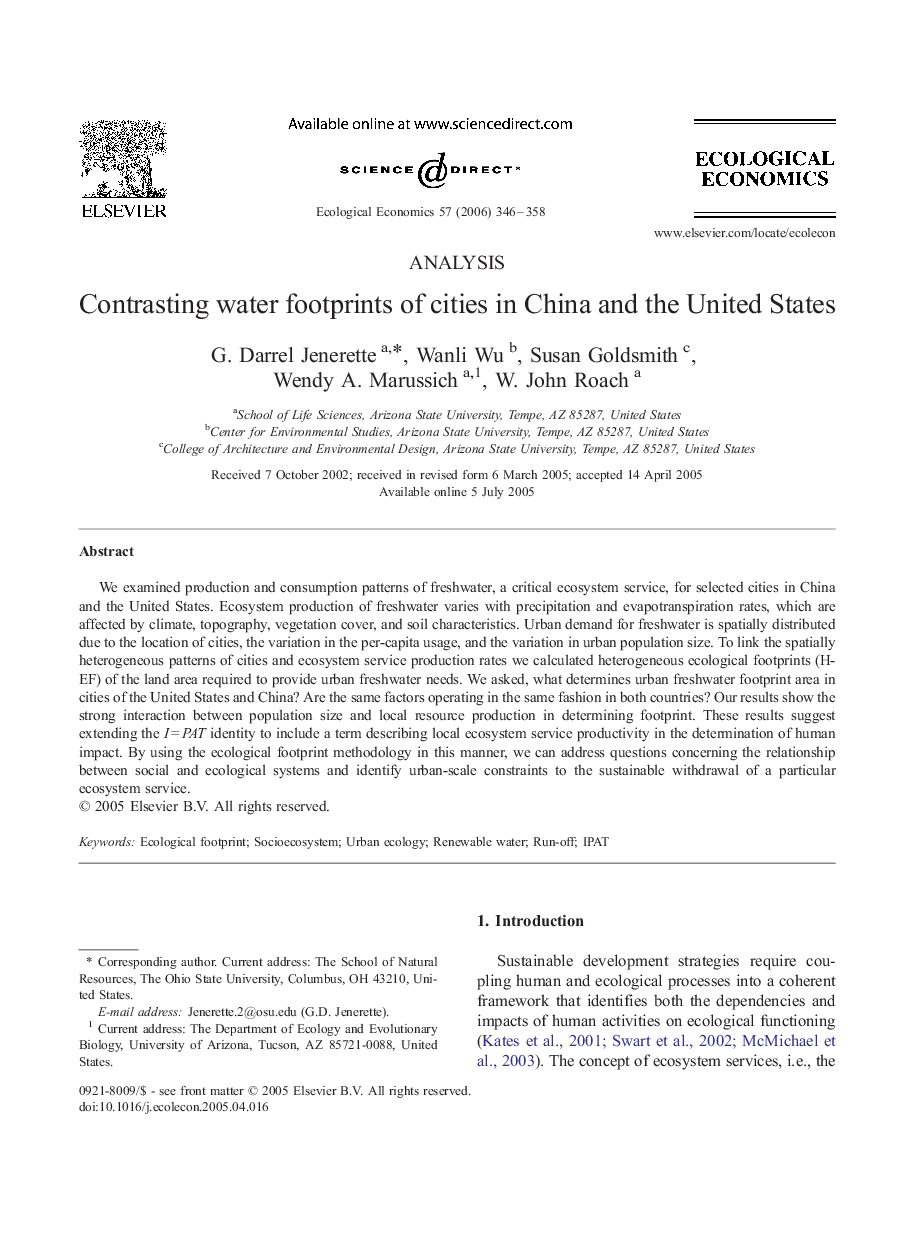| Article ID | Journal | Published Year | Pages | File Type |
|---|---|---|---|---|
| 5052529 | Ecological Economics | 2006 | 13 Pages |
We examined production and consumption patterns of freshwater, a critical ecosystem service, for selected cities in China and the United States. Ecosystem production of freshwater varies with precipitation and evapotranspiration rates, which are affected by climate, topography, vegetation cover, and soil characteristics. Urban demand for freshwater is spatially distributed due to the location of cities, the variation in the per-capita usage, and the variation in urban population size. To link the spatially heterogeneous patterns of cities and ecosystem service production rates we calculated heterogeneous ecological footprints (H-EF) of the land area required to provide urban freshwater needs. We asked, what determines urban freshwater footprint area in cities of the United States and China? Are the same factors operating in the same fashion in both countries? Our results show the strong interaction between population size and local resource production in determining footprint. These results suggest extending the IÂ =Â PAT identity to include a term describing local ecosystem service productivity in the determination of human impact. By using the ecological footprint methodology in this manner, we can address questions concerning the relationship between social and ecological systems and identify urban-scale constraints to the sustainable withdrawal of a particular ecosystem service.
